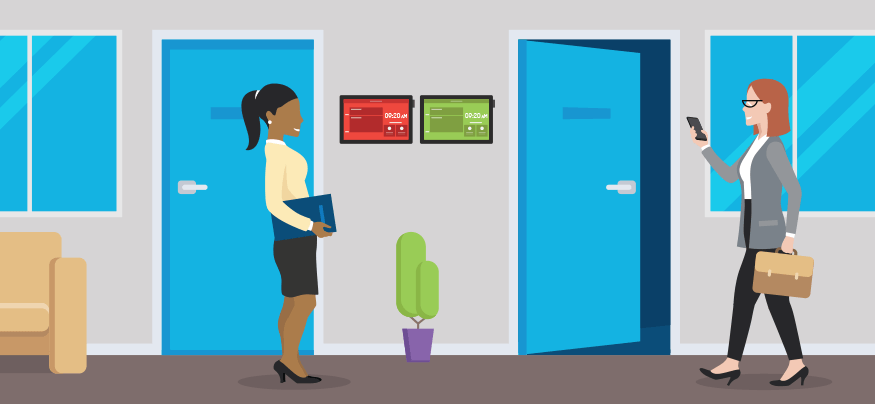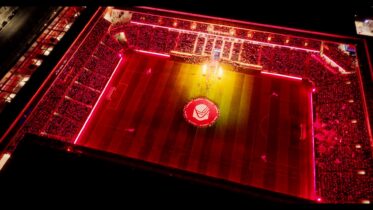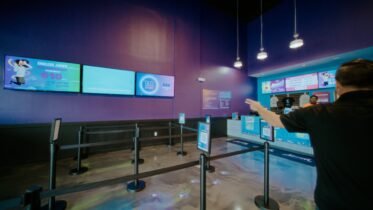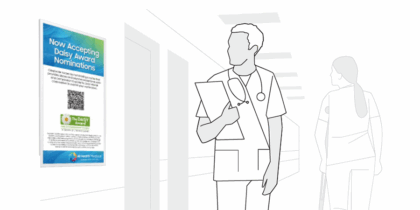Even as corporate cultures and working styles change, in-person meetings remain an integral part of the workday. And, for many organizations, coordinating conference rooms to hold those meetings remains a major pain-point, as employees lack full visibility into what rooms are available.
To address this, organizations might have quick fixes such as company-wide calendars or scheduling systems. But there is another smart solution to consider: LCD conference room signage.
Key Benefits of Signage
These 7- to 10-inch LCD screens mounted outside each meeting room help identify the room name and signify if it is free or booked. Additional details can also be displayed like meeting duration, the subject and who created the booking.
Some systems even have more sophisticated features, like gathering room usage data. With this type of technology, organizations can maximize their office space and cut operating costs.
Here’s what conference room signage systems can offer companies and staff at a fundamental level:
- Visual Cues: Integrated LED light bars may light up red or green based on room status, allowing people to see at a distance what rooms are free.
- On-the-Spot Booking: Touchscreens enable users to book a room on the spot, or lets them search for available rooms on the same floor, building or office campus. For example, HARMAN’s Acendo Book screens, are seamlessly integrated with room booking systems, and have prominent “Book Room” and “Browse Rooms” buttons that allow users to find a free room and book a meeting right at the doorway.
- No Learning Curve: With an automated and intuitive interface, these systems require little to no staff training. They also reduce the need for new or proprietary software, since they pull from popular calendar and booking systems.
The Ultimate Guide to Conference Room Tech
Download this guide to effectively plan your next meeting room technology upgrade. Download Now
Overall, these meeting room systems bring improvements such as a streamlined user experience and reduced employee confusion. For company operations, they present a new opportunity to see how their organization works.
Beyond the Basics
Depending on the attached booking and coordination systems, companies can gather room use data and average meeting participants which presents an opportunity for potential cost savings.
This sort of data provides insight into what kinds of meeting spaces are needed, versus what’s available — letting companies determine the most effective use of their real estate.
In some cases, the data may mean reconfiguring existing meeting spaces to create more, smaller huddle spaces. In others, it might suggest having less meeting space, prompting a move to a smaller office space. This type of effective room evaluation can help save thousands of dollars per month for a business.
Overall, integrating meeting room signage helps provide insight across an organization. With these systems in place, employees always aware of what rooms are available, and companies can effectively optimize their office space for long-term cost savings.
Learn how you can effectively upgrade your meeting room technology and help increase productivity









